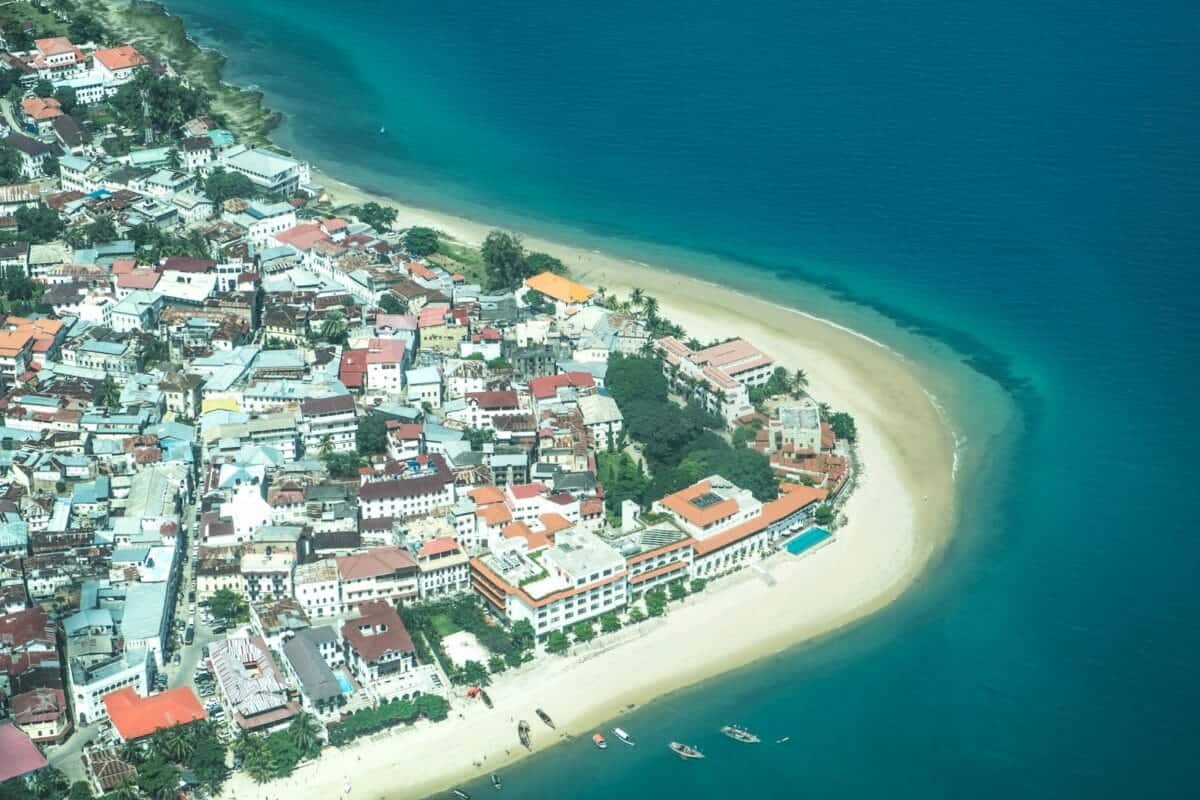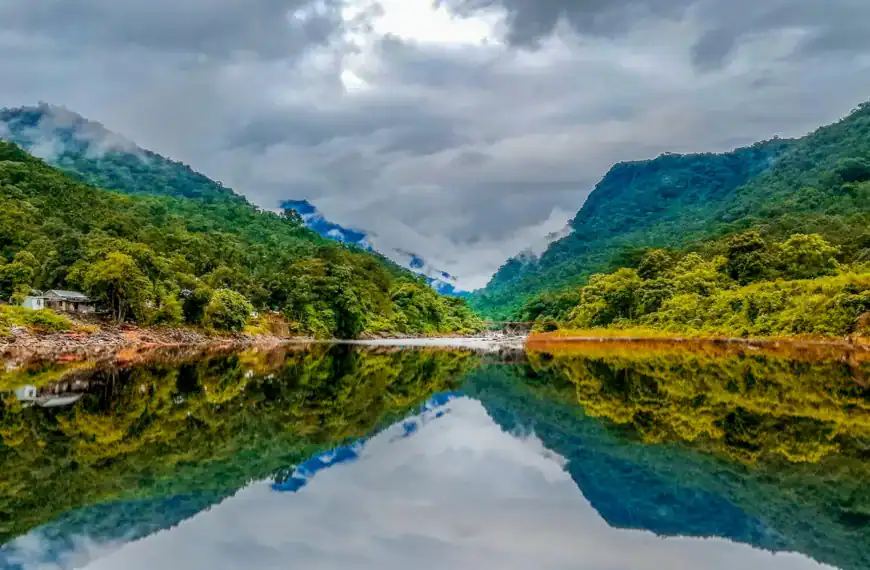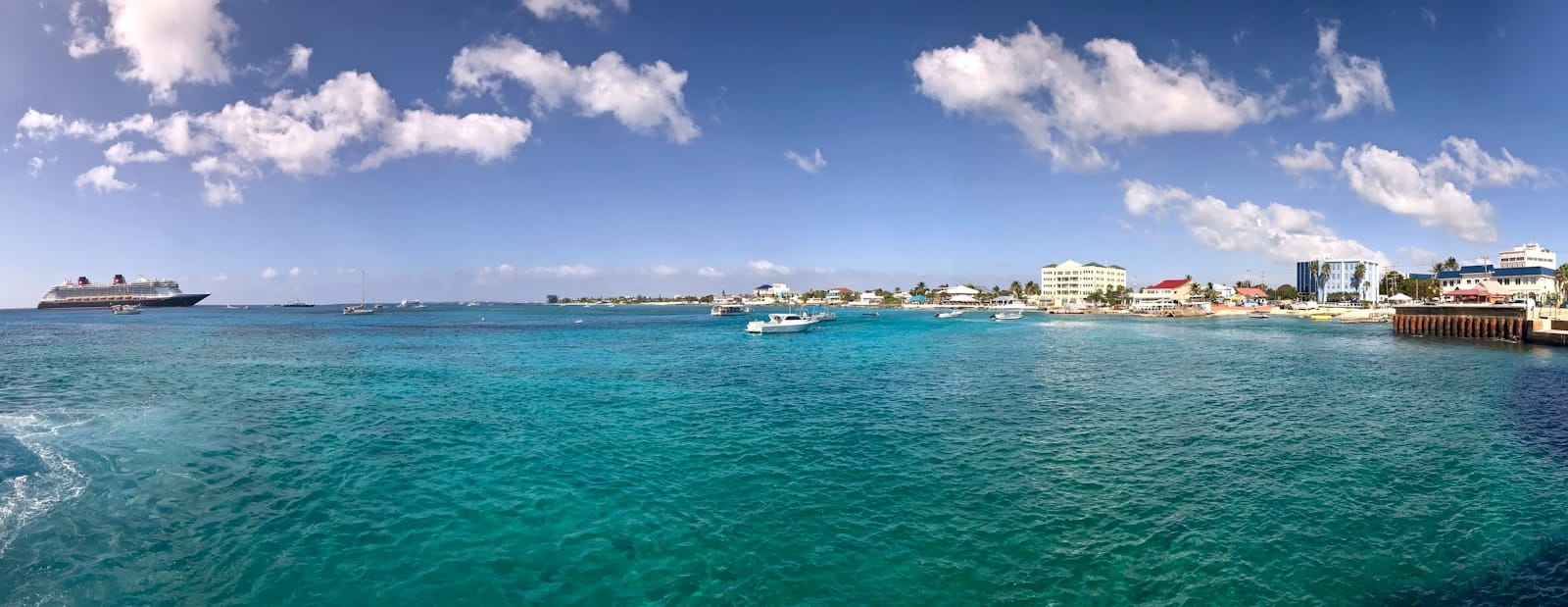Zanzibar Travel Guide – Where Culture Meets the Sea
Intro to Zanzibar Travel Guide
White-sand beaches, stone-carved alleys, and the aroma of spice drifting through the air — Zanzibar is a sensory experience like no other. This archipelago off Tanzania’s coast offers a fascinating mix of Swahili heritage, Arabic influences, and Indian Ocean beauty.
Start your journey with our Zanzibar Travel Guide and uncover what makes this destination unforgettable.
💡Quick Facts:
Destination: Zanzibar Archipelago
Continent: Africa
Country: Tanzania
Administrative Division: Semi-autonomous region of Tanzania
City: Capital – Zanzibar City (Stone Town)
Area: ~2,650 km² (Unguja & Pemba islands combined)
Population: ~1.9 million (2024 est.)
Density: ~717 people per km²
Capital: Zanzibar City (Unguja Island)
Regions/Subregions: Unguja (main island), Pemba, Tumbatu
Official & Regional Languages: Swahili (official); English widely spoken in tourism zones
Currency: Tanzanian Shilling (TZS)
Time Zone(s): East Africa Time (UTC+3)
Airports:
– Abeid Amani Karume International Airport (ZNZ) – near Stone Town
– Pemba Airport (PMA) – Chake-Chake, Pemba Island
Climate: Tropical; hot year-round with rainy and dry seasons
Known For: White sand beaches, Stone Town (UNESCO), spice farms, diving/snorkeling, Swahili culture
🛂Arrival Info:
Entry Requirements:
– Most travelers require a visa (eVisa or Visa on Arrival)
– Passport validity: 6 months minimum
Visa-Free Countries: Kenya, Uganda, Rwanda, South Africa, select SADC states
Visa-on-Arrival: Available to U.S., UK, EU, Canada, Australia, and more
Maximum Tourist Stay: 90 days per entry
Electronic Travel Authorization
Customs Info
💉Health Info:
Recommended Vaccines: Hepatitis A & B, Typhoid, Yellow Fever (if arriving from risk zone), Tetanus
Health Advisories: Malaria is a risk — take prophylaxis; dengue outbreaks possible
Hospitals: Mnazi Mmoja Hospital (Zanzibar City); private clinics in tourist zones
English-speaking Clinics: Wellcare Clinic, Global Hospital, Tasakhtaa Global Hospital
Terrain-specific Concerns: Tropical diseases, sunstroke, unsafe tap water
Insurance: Mandatory for high-end resorts; recommended for all travelers
✅ Check travel insurance options for travel emergencies, delays, and medical needs abroad — Get coverage here
✅ Stay Informed with Official Updates: WHO – International Travel & Health | CDC – Travel health updates
🚨Travel Advisory:
Current Alerts: Petty theft, political tension during elections (rare)
General Safety Level: Level 2 – Exercise Increased Caution
Regional Restrictions: Sensitive during election periods in Stone Town
Local Risks: Bag-snatching, beach thefts, conservative dress expectations
Civil Rights Concerns: LGBTQ+ travelers advised discretion
✅ Stay Informed with Official Updates: US Travel Advisory | UK Foreign Travel Advice
📅Holidays:
Major National Holidays:
– Union Day (April 26)
– Zanzibar Revolution Day (Jan 12)
– Independence Day (Dec 9)
Religious Holidays:
– Eid al-Fitr & Eid al-Adha – Islamic celebrations
Local Events:
– Zanzibar International Film Festival (July)
– Sauti za Busara Music Festival (Feb)
💰Visitor Info:
Currency: Tanzanian Shilling (TZS); USD widely accepted in tourist areas
Exchange Tips: Use official exchange bureaus or hotel desks
ATMs: Available in Stone Town, Nungwi, Paje; unreliable in rural areas
Cards: Accepted in resorts and high-end businesses
Tipping: Expected – 10% in restaurants, $5–$10 per day for guides
Tourist Taxes: $1–$5 per night hotel levy + VAT on services
Daily Budget:
– Budget: $50–$90 USD
– Midrange: $120–$250 USD
– Luxury: $400+ USD (beachfront resorts, private boats)
✈️Airports:
Main Airport:
– Abeid Amani Karume International Airport (ZNZ)
– International flights from Europe, Middle East, Africa
– TAA | Mwanzo
Secondary Airport: Pemba Airport (PMA) – for inter-island access
Transport to Towns:
– Taxis, hotel shuttles, or local dala-dala minibuses
✅ Delayed or canceled flight? Check if you’re eligible for compensation
🚍Transport:
Local: Dala-dalas (minibuses), tuk-tuks, taxis; scooters in beach towns
Inter-island: Ferry (Dar es Salaam–Zanzibar); local flights (Zanzibar–Pemba)
Driving Laws: Left side; foreign license + Zanzibar permit required
Rental Cars: Available with driver or permit-based self-drive
Scams: Overpriced taxis, unmetered transport, fake ferry tickets
✅ Book reliable airport transfers and in-city rides in advance. Reserve your ride here
📶Connectivity:
SIM/eSIM: Zantel, Vodacom, Airtel – kiosks at airport and towns
Mobile Coverage: Excellent in main towns, good on beaches
Public Wi-Fi: Widespread in hotels, restaurants; can be slow
Roaming: Available but costly — local SIM recommended
✅ Stay connected abroad with affordable eSIM data packs. Get your eSIM here
📜Laws & Etiquette:
Drinking Age: 18+
Alcohol: Legal; limited during Ramadan or in Muslim villages
LGBTQ+ Status: Illegal; discretion advised
Etiquette: Conservative dress expected outside resorts
Cultural Taboos: Avoid public intimacy; don’t photograph locals without permission
Photography Rules: Drones require permits; avoid airports, military zones
🛡️Emergency Info:
Emergency Numbers:
– Police: 112
– Ambulance: 114
Tourist Assistance: Zanzibar Tourism Commission
Nearest Embassies: Located in Dar es Salaam (mainland)
Tourist Police: Available in Stone Town and Nungwi
✅ Use embassy locator tools: Embassies Worldwide
🌦️Weather:
Climate Type: Tropical monsoon (Köppen: Am)
Best Time to Visit: June to October (dry and breezy)
Short Rains: November–December
Long Rains: March–May — hot, humid, with fewer tourists
Average Temps:
– Dry season: 25–29°C (77–84°F)
– Rainy season: 27–31°C (80–88°F), high humidity
✅ Stay prepared—check the weather forecast for your destination — Weather Forecast
Get to Know Zanzibar – Neighborhoods & Districts
Zanzibar isn’t just one place. It’s a mosaic of moods, from bustling markets to coral-stone seafronts.
Stone Town – A UNESCO-listed maze of alleys and carved doors, where history meets the sea. Perfect for walking tours and hidden cafes.
Nungwi – Located at the northern tip, this is Zanzibar’s beach party hub. Think clear waters, sunset bars, and dhow sails on the horizon.
Paje – On the southeast coast, Paje is a kite surfer’s dream with steady trade winds and a laid-back vibe.
Kendwa – Next to Nungwi, Kendwa is a bit quieter with all-tide beaches, ideal for swimming anytime.
Jambiani – A slower, village-side strip perfect for cultural homestays, cycling paths, and eco-friendly tours.
Matemwe – Northeast coast luxury with coral reefs just offshore and access to Mnemba Island snorkeling.
Chukwani – A residential suburb near the airport, convenient for quick stays with a local flavor.
Michamvi Peninsula – Secluded and scenic, perfect for honeymooners looking for quiet sunsets and boutique resorts.
Where to Stay in Zanzibar: Choose Stone Town for culture lovers, Paje for surfers, Nungwi/Kendwa for nightlife, or Jambiani for quiet retreats.
Top Attractions & Iconic Sights
Skyline Views and Icons
- House of Wonders – The tallest building in Stone Town, now under renovation but still iconic from the outside.
- Forodhani Gardens – A nightly food market right on the waterfront, where grilled seafood meets sunset social scenes.
- Zanzibar Doors – Scattered throughout Stone Town, these intricately carved wooden doors tell stories of Omani, Indian, and Swahili history.
Local Tip: Climb the Old Fort ramparts for great sea views and artisan stalls.
Museums and Cultural Gems
- Freddie Mercury House – Birthplace of Queen’s legendary frontman, now a small but fascinating exhibit.
- Palace Museum (Beit el-Sahel) – Once home to Sultan’s family, it offers a glimpse into royal Zanzibari life.
- Peace Memorial Museum – A quirky and under-visited spot filled with colonial relics and early Swahili artifacts.
Local Tip: Hire a local guide to decode the Swahili, Arab, and European layers inside each museum.
Family Favorites
- Jozani Forest – A must-see for kids and nature lovers alike, home to red colobus monkeys and mangrove boardwalks.
- Prison Island – A short boat ride from Stone Town, this former quarantine site is now home to giant tortoises.
- Mnarani Aquarium – A sea turtle conservation lagoon in Nungwi that allows interaction and education.
Natural Escapes Within and Near Zanzibar
Zanzibar is as much about nature as it is about culture.
- Nakupenda Sandbank – A shifting white sand strip surrounded by turquoise waters — accessible by boat from Stone Town.
- Jozani-Chwaka Bay National Park – The island’s only national park, filled with monkeys, butterflies, and natural trails.
- Kiwengwa-Pongwe Forest – Lesser known but filled with butterflies, caves, and baobab trees.
- Mangrove Boardwalks – Found in various villages, perfect for sunset strolls and birdwatching.
- Paje Reef Walk – Explore tidal pools and reef ecosystems at low tide, guided by locals.
Zanzibar Day Trip Ideas
- Mnemba Atoll – Snorkeling and dolphin-watching paradise (45 min by boat from Matemwe)
- Chumbe Island Coral Park – Private marine reserve with day permits (30 min by boat from Stone Town)
- Uzi Island – Offbeat mangrove island connected by causeway at low tide (1.5 hours drive)
- Spice Farms – Inland half-day tours near Kizimbani or Kidichi (30–40 minutes by car)
Culture, History, and Local Identity
Zanzibar’s layered identity is deeply tied to its role as a trade center.
- Swahili-Arab Heritage – Found in architecture, language, and cuisine.
- Omani Influence – Visible in the mosques, forts, and sultans’ legacy.
- Indian Community – A long-standing presence adding flavor to Zanzibar’s food and trade.
Cultural Tours:
- Join a Stone Town walking tour to dive into spice routes, slave markets, and hidden alleyways.
- Explore a Swahili cooking class with local women’s cooperatives.
Book immersive Zanzibar tours and experience unforgettable things to do in Zanzibar — from sacred temple rituals and highland treks to floating markets and lakeside food adventures.
Local Food, Markets, and Artisan Vibes
Zanzibar’s food scene is a blend of Swahili soul and Indian spice.
- Lukmaan Restaurant – Affordable, authentic, and a true local favorite.
- The Rock Restaurant – Built on a literal rock off the Michamvi coast. Book ahead.
- Mercury’s Restaurant – A tourist favorite with ocean views and homage to Freddie.
- Taperia Wine & Tapas Bar – A hidden gem in Stone Town with live music and Mediterranean flair.
Markets to Explore:
- Darajani Market – For spices, fish, and daily bustle.
- Mwanakwerekwe Market – Less touristy, more local flavor.
Taste your way through Zanzibar and explore delicious things to do in Zanzibar from seafood grills to street food stalls.
Events, Nightlife, and Seasonal Fun
- Sauti za Busara (Feb) – Zanzibar’s biggest music festival, held in the Old Fort.
- Zanzibar International Film Festival (ZIFF) (July) – Major East African cinematic event.
- Mwaka Kogwa Festival (July) – A unique fire and banana-stalk ritual in Makunduchi.
Nightlife Zones:
- Kendwa – Beach parties with live DJs
- Paje – Backpacker bars and kite surf lounges
- Stone Town – Rooftop lounges and oud music venues
Seasonal Highlights:
- Spring: Best time for spice farm tours
- Summer: Ideal for diving and snorkeling
- Fall: Cultural festivals and fewer tourists
- Winter: Calm seas and holiday celebrations
Which Airport Should You Use?
Zanzibar Abeid Amani Karume International Airport (ZNZ) – Serves major international and East African routes, located 10 minutes from Stone Town.
Julius Nyerere Airport (DAR), Dar es Salaam – Often a gateway if flying into mainland Tanzania first, with ferry connection to Zanzibar (2 hours).
Getting Around Zanzibar – Transport Tips
Zanzibar is compact but varies by region.
- Walkable in Stone Town
- Dala-dala (shared minivans) — Cheap but crowded
- Taxis — Negotiate in advance; not metered
- Bicycles and Scooters — Great for beach areas
- Ferries and Dhows — Scenic transport between islands
Apps to Download: Bolt (limited), Maps.me (offline), Zantel (SIM support)
Local Tip: Remove shoes when entering homes or certain shops — a sign of respect.
Best Time to Visit Zanzibar
- June to October – Dry season, best weather, ideal for diving/snorkeling.
- November to December – Short rains, lush scenery, fewer crowds.
- January to March – Warm, dry, great for spice farm visits.
- April to May – Rainy season, fewer tourists, some lodges close.
Zanzibar Travel Essentials – Key Insights
- SIM & Connectivity: Buy Zantel or Airtel SIM at the airport
- Transit Costs: Dala-dalas ~$0.20, taxis ~$10–$30 per ride
- Arrival Points: ZNZ Airport, Dar ferry port, inter-island docks
- Local Vibe: Relaxed, friendly, sometimes “pole pole” (slow pace)
- Walkability: Easy in Stone Town, trickier in beach villages
Quick Picks:
- Best for food: Stone Town
- Best for views/sunset: Kendwa
- Best for family fun: Nungwi + Jozani Forest
- Best for nightlife: Paje/Kendwa
- Best for slow travelers: Jambiani
- Darajani alley tea stalls – Local hangouts for ginger chai
- Hamamni Persian Baths – Off-the-beaten path historic spot
- Chapwani Island – Low-key retreat just offshore
- Mrembo Spa – Traditional treatments and henna artistry
- Zanzibar Coffee House rooftop – Morning serenity over Stone Town
Etiquette Tip: Always greet with “Jambo” or “Shikamoo” — it opens hearts.
Nearby Destinations to Explore
- Dar es Salaam – Urban Energy Meets Coast
Just 2 hours by ferry; mix city hustle with historic museums and beach getaways. - Pemba Island – Untouched Reef Escape
The lesser-visited northern isle, ideal for diving and cultural immersion. - Bagamoyo – Ruins and Colonial Echoes
A quiet mainland town with slave trade history and artistic roots. - Mafia Island – Marine Sanctuary Dream
Perfect for whale shark season (Oct–Mar); slower pace, eco lodges. - Arusha – Gateway to Safari Circuits
Fly in for quick access to Serengeti and Ngorongoro Crater.
Final Tips for a Smart Zanzibar Adventure
- Buy a local SIM on arrival for best coverage
- Download offline Swahili phrases and ferry timetables
- Use cash often; many places don’t accept cards
- Bring modest clothing for village visits
- Book snorkeling/dhow trips early in peak season
- Carry mosquito repellent, especially after rain
- Avoid walking Stone Town alleys alone after dark
- Visit spice farms with certified guides only
Discover more travel ideas, local tips, and planning tools to make your Zanzibar adventure effortless and unforgettable — visit our full travel hub today.
Top Tourist Attractions in Zanzibar
Chumbe Island Coral Park | Darajani Market | Forodhani Gardens | Freddie Mercury House | House of Wonders | Jambiani Beach | Jozani Forest | Kendwa Beach | Matemwe Beach | Mnarani Aquarium | Mnemba Atoll | Nakupenda Sandbank | Old Fort | Paje Beach | Palace Museum | Prison Island | Spice Farms | Stone Town | The Rock Restaurant | Uzi Island










